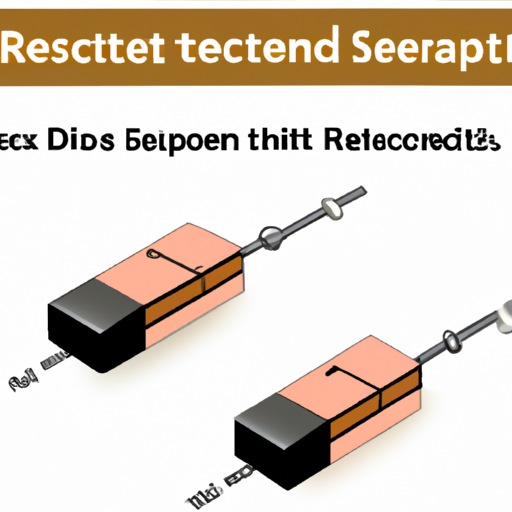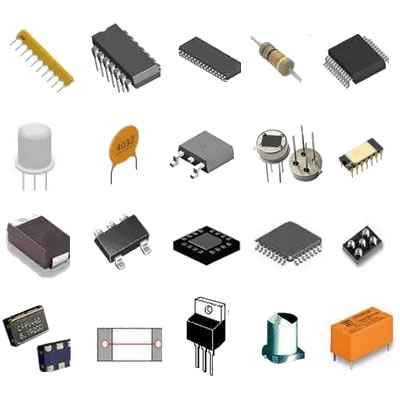An Article to Help You Understand What a Lifting Resistor Is
I. Introduction
In the world of electronics, understanding the components that make up a circuit is crucial for both novice and experienced engineers. One such component that plays a vital role in ensuring the reliability and functionality of electronic circuits is the lifting resistor. This article aims to demystify lifting resistors, explaining their definition, importance, and applications in various electrical circuits.
A. Definition of a Lifting Resistor
A lifting resistor, often referred to as a pull-up or pull-down resistor, is a resistor used to ensure that a particular input pin on a digital circuit is at a defined logic level when no active devices are driving the pin. By connecting a resistor to either the positive voltage supply (pull-up) or ground (pull-down), the circuit can avoid undefined states that may lead to erratic behavior.
B. Importance of Lifting Resistors in Electrical Circuits
Lifting resistors are essential for maintaining signal integrity and preventing floating inputs, which can cause unpredictable circuit behavior. They are widely used in digital circuits, microcontrollers, and various sensor applications, making them a fundamental concept in electronics.
C. Purpose of the Article
This article will provide a comprehensive understanding of lifting resistors, including their types, applications, and best practices for circuit design. By the end, readers will have a solid grasp of how lifting resistors function and their significance in electronic systems.
II. Understanding Resistors
A. Basic Concepts of Resistors
1. Definition and Function
A resistor is a passive electrical component that opposes the flow of electric current, converting electrical energy into heat. The primary function of a resistor is to limit current, divide voltage, and condition signals within a circuit.
2. Types of Resistors
Resistors come in various types, including fixed, variable, and specialty resistors. Fixed resistors have a specific resistance value, while variable resistors, such as potentiometers, allow for adjustable resistance. Specialty resistors, like thermistors and photoresistors, change resistance based on environmental conditions.
B. Role of Resistors in Electrical Circuits
1. Current Limiting
Resistors are commonly used to limit the amount of current flowing through a circuit, protecting sensitive components from damage.
2. Voltage Division
Resistors can be arranged in series to create a voltage divider, allowing for specific voltage levels to be obtained from a higher voltage source.
3. Signal Conditioning
In analog circuits, resistors help shape and condition signals, ensuring that they are within the desired range for processing.
III. What is a Lifting Resistor?
A. Definition and Characteristics
A lifting resistor is specifically designed to pull an input pin to a defined logic level when it is not actively driven by another device. Pull-up resistors connect the pin to a positive voltage, while pull-down resistors connect it to ground.
B. Common Applications
1. Pull-up and Pull-down Resistors
Pull-up resistors are used to ensure that a pin reads a high logic level (1) when not driven, while pull-down resistors ensure a low logic level (0). These configurations are crucial in digital circuits, especially in microcontroller applications.
2. Signal Integrity in Digital Circuits
Lifting resistors help maintain signal integrity by preventing floating inputs, which can lead to noise and erratic behavior in digital systems.
C. How Lifting Resistors Work
When a lifting resistor is connected to a pin, it provides a weak pull to the defined logic level. For example, in a pull-up configuration, when no active device is driving the pin, the resistor pulls the voltage up to the supply level, ensuring a stable high state.
IV. The Importance of Lifting Resistors
A. Preventing Floating Inputs
1. Explanation of Floating Inputs
A floating input occurs when a pin is not connected to a defined voltage level, leaving it susceptible to noise and interference. This can result in unpredictable behavior in digital circuits.
2. Consequences of Floating Inputs
Floating inputs can lead to false triggering, erratic operation, and increased power consumption, making it essential to use lifting resistors to maintain stable logic levels.
B. Ensuring Reliable Circuit Operation
1. Impact on Logic Levels
Lifting resistors help ensure that logic levels are clearly defined, reducing the risk of misinterpretation by digital devices.
2. Noise Reduction
By providing a defined voltage level, lifting resistors minimize the impact of noise on the circuit, enhancing overall performance.
C. Enhancing Circuit Stability
Lifting resistors contribute to the stability of a circuit by preventing unintended state changes, ensuring that the system operates as intended.
V. Types of Lifting Resistors
A. Pull-up Resistors
1. Definition and Function
Pull-up resistors connect an input pin to a positive voltage supply, ensuring that the pin reads a high logic level when not actively driven.
2. Typical Use Cases
Pull-up resistors are commonly used in applications such as switch inputs, where the switch connects the pin to ground when pressed, allowing the microcontroller to detect the state change.
B. Pull-down Resistors
1. Definition and Function
Pull-down resistors connect an input pin to ground, ensuring that the pin reads a low logic level when not actively driven.
2. Typical Use Cases
Pull-down resistors are often used in applications where a button or switch connects the pin to a positive voltage, allowing the microcontroller to detect when the switch is pressed.
C. Comparison Between Pull-up and Pull-down Resistors
Both pull-up and pull-down resistors serve the same purpose of defining logic levels, but their configurations differ based on the desired behavior of the circuit. The choice between the two depends on the specific application and the logic requirements of the system.
VI. Designing with Lifting Resistors
A. Choosing the Right Resistor Value
1. Factors to Consider
When selecting a lifting resistor, consider factors such as the input impedance of the device, the desired pull-up or pull-down strength, and the overall circuit design.
2. Common Resistor Values
Common resistor values for lifting resistors range from 1kΩ to 10kΩ, but the optimal value may vary based on the specific application and circuit requirements.
B. Placement in Circuit Design
1. Best Practices
Place lifting resistors close to the input pins to minimize noise and ensure effective signal integrity. Additionally, consider the layout of the circuit to avoid interference from other components.
2. Common Mistakes to Avoid
Avoid using excessively low resistor values, as this can lead to increased power consumption and potential damage to the driving device. Conversely, using too high a value may result in slow response times and susceptibility to noise.
VII. Real-World Examples
A. Case Study: Microcontroller Applications
In microcontroller applications, lifting resistors are often used to ensure that input pins are at a defined logic level when switches or sensors are not actively driving the signal. This prevents floating inputs and ensures reliable operation.
B. Case Study: Sensor Integration
When integrating sensors into a circuit, lifting resistors can help maintain stable readings by providing a defined voltage level, reducing the impact of noise and interference.
C. Case Study: Communication Protocols
In communication protocols, such as I2C or SPI, lifting resistors are used to ensure that data lines are at a defined logic level when not actively driven, preventing data corruption and ensuring reliable communication.
VIII. Troubleshooting Common Issues
A. Identifying Problems Related to Lifting Resistors
Common issues related to lifting resistors include floating inputs, incorrect logic levels, and erratic behavior in digital circuits. Identifying these problems often involves checking resistor values and connections.
B. Solutions and Best Practices
To resolve issues, ensure that lifting resistors are correctly placed and have appropriate values. Additionally, verify that all connections are secure and that there are no unintended shorts or opens in the circuit.
C. Tools for Testing and Measurement
Using tools such as multimeters and oscilloscopes can help diagnose issues related to lifting resistors, allowing for effective troubleshooting and resolution.
IX. Conclusion
A. Recap of Key Points
Lifting resistors are essential components in electronic circuits, providing stability and reliability by preventing floating inputs and ensuring defined logic levels. Understanding their function and applications is crucial for effective circuit design.
B. The Future of Lifting Resistors in Circuit Design
As technology continues to evolve, the role of lifting resistors will remain significant in ensuring the integrity and reliability of digital circuits. With advancements in circuit design and integration, lifting resistors will continue to play a vital role in modern electronics.
C. Encouragement for Further Learning
For those interested in deepening their understanding of lifting resistors and circuit design, numerous resources are available, including textbooks, online tutorials, and industry standards. Embrace the opportunity to learn and enhance your skills in electronics.
X. References
A. Suggested Reading Materials
1. "The Art of Electronics" by Paul Horowitz and Winfield Hill
2. "Electronics for Dummies" by Cathleen Shamieh
B. Online Resources and Tutorials
1. Electronics tutorials on websites like SparkFun and Adafruit
2. YouTube channels dedicated to electronics education
C. Industry Standards and Guidelines
1. IEEE standards for electronic components
2. IPC standards for printed circuit board design
By understanding lifting resistors and their applications, you can enhance your skills in circuit design and ensure the reliability of your electronic projects. Happy learning!





